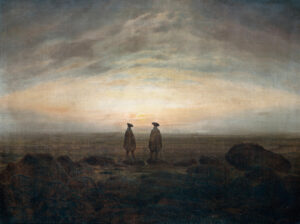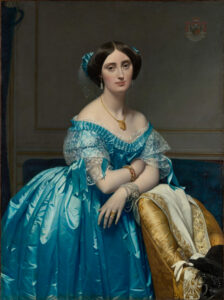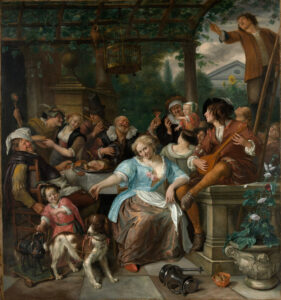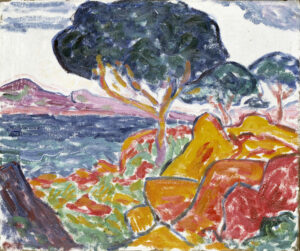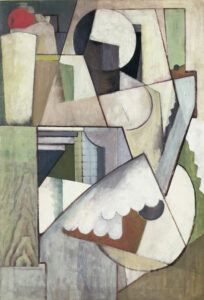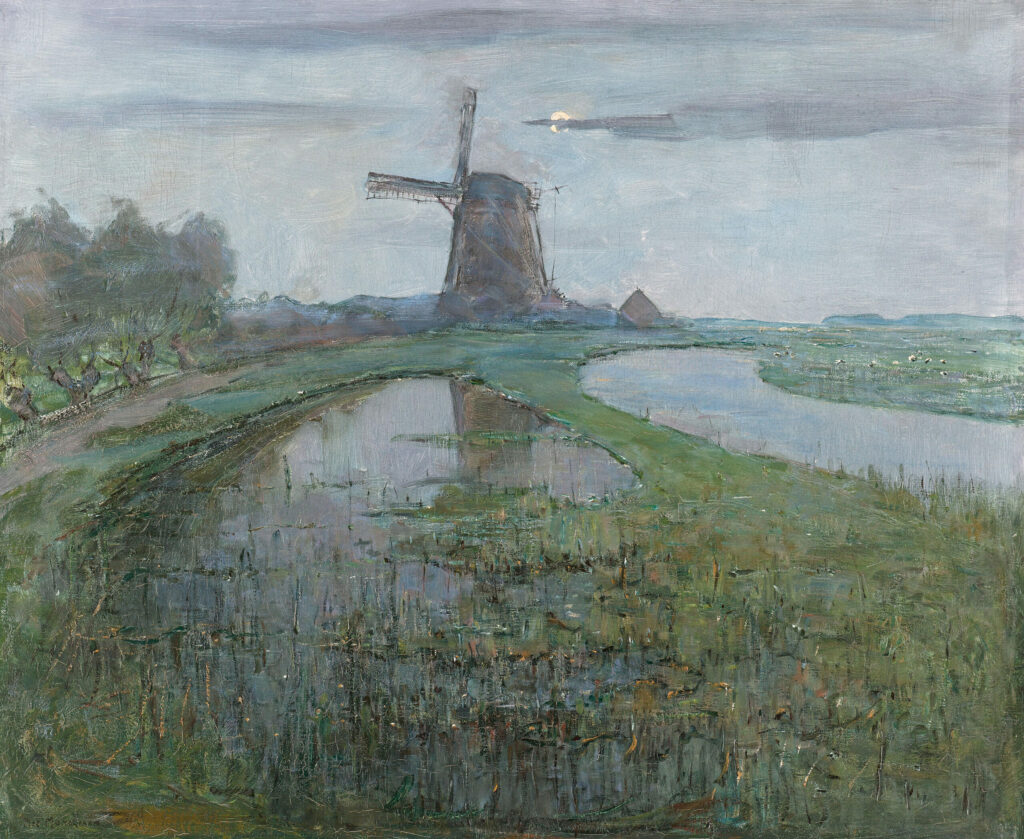
This oil on canvas represents a pivotal moment in the evolution of the young Piet Mondrian, before his conversion to geometric abstraction that would make him famous.
The work belongs to the tradition of the Hague School, a Dutch naturalist movement of the late 19th century. The landscape depicts a windmill characteristic of the Dutch polders standing out against a twilight sky where the moon emerges. The composition is organized in horizontal bands: in the foreground, irrigation canals reflect the sky, framed by verdant dikes dotted with vegetation. This structure in successive planes testifies to the influence of Paul Gabriël, whose “In the Month of July” Mondrian had copied a few years earlier. However, Mondrian was already moving away from the strict naturalism of his predecessors. The brushwork is freer, almost Impressionist.
Further information
- Oostzijdse Mill along the Gein by Moonlight, Piet Mondrian (signed by the artist), circa 1903
- Oil on canvas, 63 x 75.4 cm
- Rijksmuseum, Amsterdam
- https://www.rijksmuseum.nl/en/collection/object/Oostzijdse-Mill-along-the-River-Gein-by-Moonlight–d8ebf6668c0af4286d5bdb3dcf1cd043
Piet Mondrian (1872-1944), whose real name was Pieter Cornelis Mondriaan, remains one of the pioneers of geometric abstraction and a contributor to the De Stijl movement. Born in Amersfoort in the Netherlands, he was initially trained in the academic and naturalist tradition, influenced by the Hague School. His encounter with Cubism in Paris in 1911 triggered an aesthetic revolution: he gradually abandoned figuration to develop Neoplasticism, a theory based on the balance of black perpendicular lines and rectangles of primary colors on a white background. Settling in Paris and then New York, he profoundly influenced modern art, design, and architecture of the 20th century. His abstract compositions, reduced to geometric essentials, express his quest for universal harmony and pure plastic spirituality, making him one of the most innovative artists of modernity.

